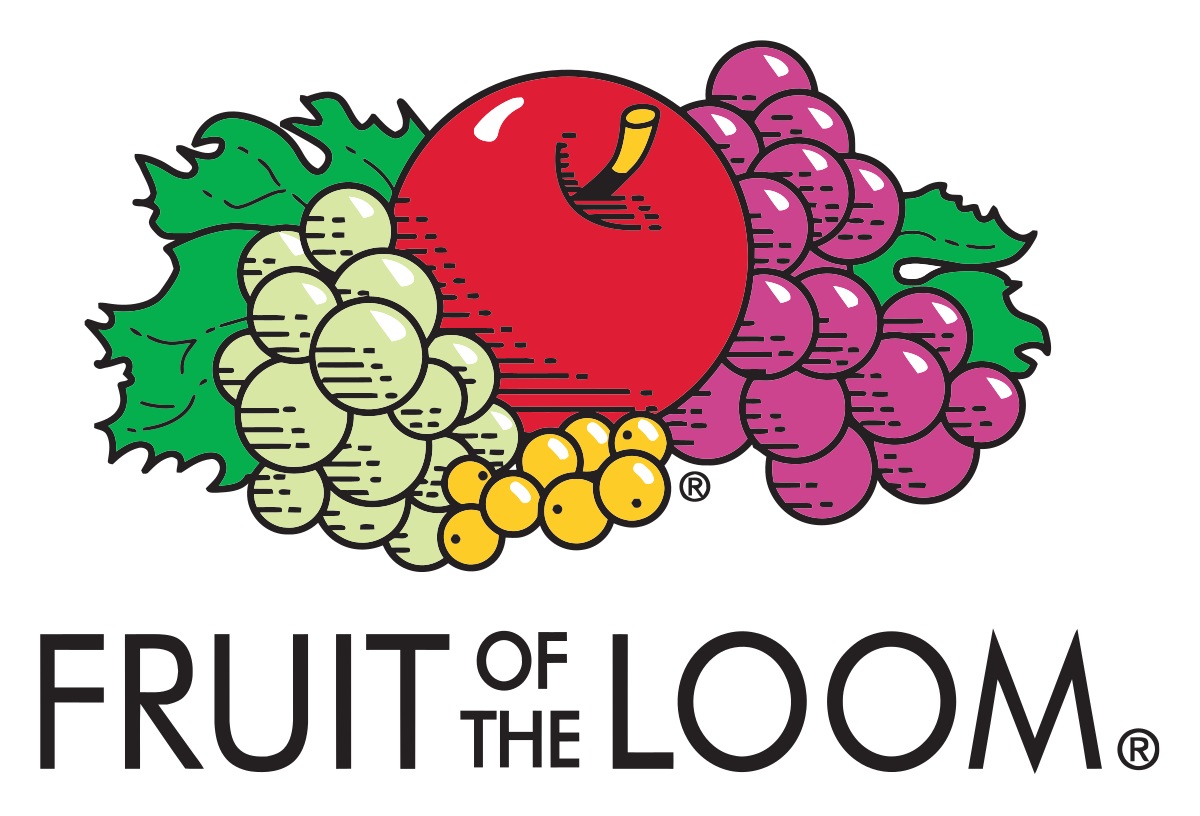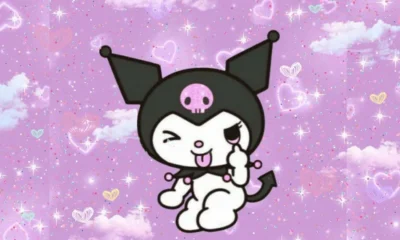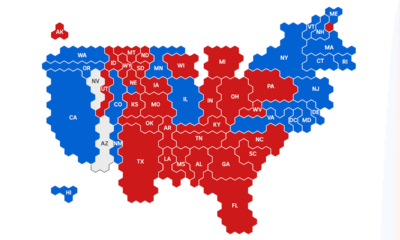Lifestyle
Fruit of the Loom Cornucopia: The Fascinating History and Myth Behind the Iconic Logo

Fruit of the Loom is a household name synonymous with quality clothing, notably underwear and basic garments. Interestingly, one enduring question that continually sparks curiosity and debate revolves around its iconic logo. This article delves deeply into the mystery of the Fruit of the Loom cornucopia, unraveling the myths, historical contexts, and cultural phenomena surrounding this fascinating emblem.
What is the Fruit of the Loom Cornucopia?
The Fruit of the Loom cornucopia refers to a widely debated image believed by many to have historically appeared in the brand’s logo. Known as the “horn of plenty,” the cornucopia traditionally symbolizes abundance and prosperity, spilling out fruits, vegetables, and other riches. Yet, despite widespread belief, evidence clearly reveals that Fruit of the Loom’s official logo has never included a cornucopia.
Origin of the Brand
Founded in 1851, Fruit of the Loom quickly became recognized for producing comfortable, affordable clothing. The brand’s identity, built around straightforward quality and reliability, reflected American working-class values. The name itself, “Fruit of the Loom,” evokes images of fresh produce and natural simplicity.
Actual Logo vs. Perceived Logo
The official logo for Fruit of the Loom has consistently featured an arrangement of fruit: an apple, grapes, currants, and leaves. However, many vividly recall the image including a cornucopia behind the fruit. This discrepancy has propelled the brand into the intriguing realm of the Mandela Effect, a psychological phenomenon where groups of people collectively remember events or details incorrectly.
Unpacking the Mandela Effect
How the Mandela Effect Explains the Cornucopia Phenomenon
The Mandela Effect is named after Nelson Mandela, whose death many people falsely remember occurring in prison during the 1980s, despite him actually passing away in 2013. Similarly, the Fruit of the Loom cornucopia misunderstanding is a classic case of collective false memory.
The Mandela Effect demonstrates how shared cultural expectations and symbolism—such as associating fruit with the horn of plenty—can create a powerful yet false memory. In the case of Fruit of the Loom, many assume a cornucopia’s presence because the fruits naturally align with the abundance theme symbolized by the horn.
Cultural Influences Reinforcing the False Memory
The pervasive use of cornucopia imagery, particularly during American Thanksgiving, reinforces subconscious associations. As Fruit of the Loom’s brand involves fruit imagery, it’s understandable why many individuals instinctively insert a cornucopia into their mental recollection of the logo.
Historical Context of the Cornucopia
Symbolism in Ancient Mythology
The cornucopia originates from ancient Greek and Roman mythology. In one popular myth, Zeus accidentally broke a goat’s horn while playing. To make amends, Zeus promised the horn would always overflow with endless bounty. Thus, the horn became emblematic of prosperity and abundance.
Cornucopia in Modern Times
Today, the cornucopia represents prosperity, nourishment, and gratitude. Widely used in autumnal and harvest-themed decorations, particularly in the United States, it symbolizes generosity and gratitude, resonating deeply within American cultural identity. It makes sense, therefore, that a subconscious connection has formed between the concept of abundance and Fruit of the Loom’s fruit-filled logo.
Investigating the Brand’s History
Logo Evolution of Fruit of the Loom
Fruit of the Loom has been consistent about its branding. Historical records from patent and trademark offices conclusively confirm no registered design has included a cornucopia. The earliest logos from the late 19th century up to the present show clear, consistent elements: apples, grapes, currants, and leaves—but no horn.
Official Clarifications from the Brand
Fruit of the Loom itself has publicly clarified the confusion several times. Company representatives categorically state that the cornucopia never existed within their logo. This has been confirmed through extensive archival research, marketing materials, and product labeling throughout the brand’s existence.
Psychological Perspectives
Cognitive Biases and False Memories
Psychologists attribute phenomena like the Fruit of the Loom cornucopia to cognitive biases, specifically confabulation. Confabulation occurs when the brain subconsciously fills in gaps in memory with fabricated details that align with existing knowledge and beliefs. In this instance, the alignment of the fruit with the concept of abundance naturally leads to inserting a cornucopia subconsciously.
Group Dynamics in Memory Formation
When many individuals share the same false memory, it reinforces the belief in its authenticity. Social interactions, internet discussions, and collective memory validation online can strongly embed these inaccurate memories, explaining why the Fruit of the Loom cornucopia myth persists vigorously.
Popular Media and Cultural Impact
Internet and Social Media Influence
The internet age significantly amplified the Mandela Effect phenomenon. Online forums, social media platforms, and video-sharing sites like YouTube regularly discuss and analyze the Fruit of the Loom cornucopia, perpetuating debates and spreading awareness about the discrepancy. Memes and viral discussions also play a role in strengthening this collective false memory.
Impact on the Brand
Interestingly, despite the misinformation, the Fruit of the Loom cornucopia myth has positively impacted the brand. It generated increased attention and engagement, inadvertently enhancing brand visibility. The intrigue around the Mandela Effect phenomenon has even helped Fruit of the Loom remain relevant in pop culture.
Clarifying the Misconception: Final Thoughts
While intriguing, the reality remains clear—the Fruit of the Loom cornucopia never existed. Yet, its imagined presence has undeniably influenced popular culture and branding discussions. Exploring the psychology behind this phenomenon reveals how easily collective memory can deviate from reality.
The Fruit of the Loom cornucopia myth ultimately highlights the fascinating interplay between human psychology, culture, and branding. Understanding how and why these collective false memories form offers valuable insights into consumer psychology, brand perception, and the enduring power of symbolism.
In conclusion, the Fruit of the Loom cornucopia is not just an intriguing memory lapse—it’s a compelling illustration of the Mandela Effect in action, demonstrating vividly how our minds can sometimes rewrite history in surprisingly convincing ways.
Lifestyle
“Who Was Glenda Cleveland? The Unsung Hero of Milwaukee”

Who Was Glenda Cleveland? The Unsung Hero of Milwaukee
Some heroes never wear capes, and some stories never make the headlines they deserve. Glenda Cleveland was one of those quiet heroes — an ordinary woman who did something extraordinary. While most people know the horrifying story of Jeffrey Dahmer, far fewer recognize the name Glenda Cleveland. Yet, without her courage, persistence, and humanity, many more lives could have been lost in Milwaukee during those dark days of the early 1990s.
This is not just a retelling of what happened. It’s a tribute to a woman whose moral compass never wavered, whose instincts proved right, and whose name deserves to be remembered as a symbol of conscience and courage.
The Woman Behind the Name: Glenda Cleveland’s Story
To understand who Glenda Cleveland was, you need to step into her world — a Milwaukee resident, a mother, a neighbor, and most importantly, a woman who refused to look away when something felt terribly wrong.
Glenda lived in an apartment building near Jeffrey Dahmer’s home. Like any attentive neighbor, she noticed things. Unusual noises, foul smells, and people going in and out at strange hours. But what made Glenda Cleveland stand apart was her willingness to question what others ignored.
One fateful night in 1991, she saw something that would haunt her forever — a terrified, bleeding boy trying to escape from Dahmer’s apartment. Glenda and her daughter, Sandra, immediately called the police. They pleaded, explained, insisted that something was wrong. But the officers dismissed their concerns, returning the young boy — Konerak Sinthasomphone — to Dahmer. Hours later, the boy was dead.
BIO: Facts About Glenda Cleveland
| Full Name | Glenda Cleveland |
|---|---|
| Date of Birth | May 14, 1954 |
| Age | 56 (at time of passing in 2011) |
| Profession | Civilian, Community Member |
| Nationality | American |
| Net Worth (approx.) | Unknown / Not Public |
| Notable Works / Achievements | Alerted police about Jeffrey Dahmer, recognized for moral courage and civic duty |
The Night That Changed Everything
That phone call Glenda made was more than just a call to 911 — it was a plea for justice, humanity, and common sense. But it was ignored.
She didn’t stop there. Glenda Cleveland kept calling. Again and again. She contacted local authorities, the FBI, even the media. Her persistence stemmed not from fame or recognition, but from pure moral conviction. She wanted to make sure people were safe. She couldn’t understand how something so wrong could go unnoticed.
And yet, it did.
That failure — by the police, by the system — was catastrophic. But Glenda’s determination became the silver lining in a story of unimaginable horror. She was the voice that refused to be silenced.
Why Glenda Cleveland’s Story Still Matters Today
There’s a reason people are still talking about Glenda Cleveland decades later. Her story forces us to confront uncomfortable truths about society: bias, negligence, and the way ordinary people’s voices are often dismissed.
In an age of bystander apathy, Glenda’s courage stands as a timeless lesson. She didn’t have a badge, authority, or power. What she had was something rarer — empathy and persistence. In today’s world, where people often record instead of react, Glenda Cleveland’s bravery reminds us that humanity begins when we act.
The Legacy of a Silent Hero
When Netflix released “Monster: The Jeffrey Dahmer Story”, millions of viewers were introduced to Glenda Cleveland’s character for the first time. Played powerfully by Niecy Nash, she became the emotional heart of the series — a reminder that heroism doesn’t always come from those with weapons or badges, but from those who simply care enough to speak up.
But beyond dramatization, the real Glenda Cleveland lived a modest life. She continued working, helping her neighbors, and staying active in her community. Despite national media attention following Dahmer’s arrest, she never sought fame. She was humble, grounded, and deeply compassionate — the definition of an unsung hero.
Lessons from Glenda Cleveland’s Courage
Here’s what we can all learn from her story:
1. Trust Your Instincts
When something feels wrong, it probably is. Glenda didn’t have all the facts — but her intuition told her something wasn’t right. And she was correct.
2. Persistence Matters
She could have stopped after one call. She didn’t. That persistence, though ignored by authorities, became her legacy. True change often begins with people who refuse to give up.
3. Ordinary People Create Extraordinary Impact
Glenda wasn’t a cop, a journalist, or an activist. She was a citizen doing her part. That’s what makes her story so powerful — it shows that anyone, anywhere, can make a difference.
4. Speak Up — Even When It’s Uncomfortable
The moral weight of silence is heavy. Glenda’s voice, though ignored, continues to echo decades later as a call to action: see something, say something.
Representation in Media and Public Recognition
While Jeffrey Dahmer’s name is etched in infamy, Glenda’s has often been overlooked. The Netflix series changed that — giving her the recognition she long deserved. Viewers were shocked to learn she was a real person, not a fictional character written for drama.
City leaders in Milwaukee later honored her efforts. The police department publicly acknowledged the mistakes made that night and praised Glenda’s courage. She was even awarded by local organizations for her community service and moral fortitude.
In a world where true heroes are often forgotten, this recognition mattered — not just for her, but for what she represented.
The Broader Social Message
The story of Glenda Cleveland is not only about bravery. It’s about responsibility — how institutions fail, and how community awareness can save lives.
Her story intertwines with themes of:
-
Racial bias and institutional neglect
-
The importance of community vigilance
-
Moral courage in the face of indifference
-
How one voice can expose systemic failure
These are timeless issues. In today’s climate, where justice and equality remain pressing conversations, Glenda Cleveland’s courage resonates louder than ever.
What Happened After the Dahmer Case?
After Dahmer’s arrest in 1991, Glenda’s life didn’t suddenly change for the better. She continued living quietly, often overshadowed by the notoriety of the killer next door. But those who knew her describe her as kind, composed, and strong-willed.
She received recognition from community groups and local leaders, but her humility remained intact. Glenda Cleveland wasn’t interested in fame — only truth and justice. Sadly, she passed away in 2011 at the age of 56, still living in the same neighborhood she had called home for decades.
Her passing was quiet, just as her life had been. But her legacy continues to ripple across generations.
Why She Deserves to Be Remembered
History has a way of celebrating the wrong people. We remember the criminals, not the ones who tried to stop them. Glenda Cleveland deserves more than a footnote in the Dahmer story — she deserves her own chapter.
Her bravery wasn’t cinematic; it was real. It came from empathy, instinct, and the simple belief that every life matters. When everyone else looked away, she chose to care.
That’s heroism in its purest form.
How to Keep Her Legacy Alive
If you’ve been moved by Glenda Cleveland’s story, there are small yet powerful ways to honor her memory:
-
Educate others: Share her story with your friends, children, and community.
-
Advocate for justice: Support community programs that empower citizens to act when they see wrongdoing.
-
Challenge indifference: Whether online or offline, speak up when something feels wrong.
-
Support local heroes: Recognize everyday people doing good — teachers, caregivers, neighbors, volunteers.
Because if there’s one thing Glenda taught us, it’s that ordinary people can make an extraordinary difference.
Conclusion: Remembering Glenda Cleveland — A Voice That Still Echoes
So, who was Glenda Cleveland? She was the conscience of Milwaukee during one of its darkest chapters. A woman whose voice, though ignored in her time, continues to inspire courage, empathy, and accountability today.
When history tells the story of Jeffrey Dahmer, it should also tell the story of the woman who refused to be silent. Glenda Cleveland may not have stopped the monster next door, but she exposed the system that allowed him to thrive. And in doing so, she became something Dahmer never was — human.
Her life reminds us that courage isn’t always loud, fame isn’t always noble, and true heroism often goes uncelebrated.
Let’s change that. Let’s remember her name. Let’s tell her story.
Lifestyle
Karoline Leavitt Husband Age: Everything You Need to Know

When the public first heard that Karoline Leavitt had married a man nearly a generation older than herself, curiosity soared. The question on many lips: What is Karoline Leavitt husband age? It’s not just about numbers, though—they hint at a broader story, one that intersects politics, romance, and public scrutiny. In this article, I’ll unravel what is known (and what remains private) about Karoline Leavitt’s marriage, stepping beyond gossip to share context, biography, reactions, and more. Let’s start with the basics, then dig deeper into how age, perception, and public life collide.
BIO: Karoline Leavitt – Quick Facts
| Full Name | Karoline Claire Leavitt |
|---|---|
| Date of Birth | August 24, 1997 |
| Age | 27 (as of 2025) |
| Profession | White House Press Secretary / Political Spokesperson |
| Nationality | American |
| Net Worth (approx.) | ~$6 million (combined estimation) |
| Notable Works / Achievements | Youngest White House Press Secretary, former congressional candidate, Trump’s campaign communications lead |
That snapshot helps ground us before we zoom in on her personal life—and specifically, her husband.
The Man Behind the Title: Who Is Her Husband?
Nicholas Riccio — His Life in Brief
Karoline Leavitt is married to Nicholas Riccio, a real estate developer from New Hampshire. Though he keeps a lower public profile than his wife, a few key facts are widely known:
-
Riccio is a successful real estate entrepreneur, owning multiple properties and having built a modest but notable business portfolio.
-
He is often described in media as private, introverted, and supportive of Leavitt’s political ambitions.
-
Their love story began during Leavitt’s political rise, which means his role is both personal and—by extension—tied to public interest.
What Is Karoline Leavitt Husband Age?
The most direct answer to karoline leavitt husband age is: 59 years old (in 2025). That puts a 32-year age gap between them. She is 27, he is 59.
That age gap has been a major talking point since their relationship became public, but as you’ll see, the story is more nuanced than it might first appear.
How the Age Was Determined
-
Karoline Leavitt was born in 1997, making her 27 in 2025.
-
Based on public reports, Riccio was born around 1965 or 1966 to make him 59 in 2025.
-
Multiple publications confirm a 32-year difference between them.
-
In interviews, Leavitt has acknowledged the “atypical” gap but emphasized that their connection transcends pure numbers.
So when people search for karoline leavitt husband age, that 59 figure comes up consistently and credibly across various sources.
The Age Gap: Controversy, Critiques & Conversations
Why People Notice It
An age gap in public figures’ relationships often draws more attention than it deserves—or certainly more than private couples experience. For Karoline Leavitt and Nicholas Riccio:
-
The difference is substantial (32 years), which naturally invites conversation about power dynamics, public perception, and social norms.
-
Leavitt is a rising political figure in her own right, so combining that with a marriage to someone much older heightens scrutiny.
-
Critics and commentators tend to frame it as sensational, while supporters argue that love shouldn’t be judged by age.
How Leavitt and Riccio Address It
Leavitt hasn’t shied away from the conversation. In interviews, she sometimes refers to their marriage as “atypical” but also stresses:
-
That she sees Riccio as a partner, not a benefactor.
-
That he values her career and ambitions, and doesn’t overshadow her.
-
That maturity and experience can bring stability, and that love isn’t always a neat, conventional package.
She seems intent on reframing the narrative from one of scandal to one of mutual respect.
Timeline: From Meeting to Marriage
To understand the context around the age difference, let’s trace their journey together.
How They Met
Their paths crossed in 2022 during Leavitt’s congressional campaign in New Hampshire. A mutual friend introduced them at a political event. At that time:
-
Leavitt was building her political profile, networking, and campaigning.
-
Riccio, already established, reportedly supported from behind the scenes initially.
Engagement & Wedding
-
They became engaged in December 2023.
-
Their wedding took place in January 2025—just days prior to President Trump’s second inauguration.
-
The ceremony was held at Wentworth By the Sea Country Club in New Hampshire, with relative privacy given the public interest.
Family Life
-
In July 2024, Karoline and Nicholas welcomed their first child, a son named Nicholas Robert “Niko” Riccio.
-
Leavitt returned to political work shortly after the birth, driven by duty and momentum.
-
The arrival of their son and the timing of their marriage amid political events have made their personal life deeply intertwined with Leavitt’s public role.
This timeline helps illustrate that karoline leavitt husband age isn’t just a statistic—it’s a backdrop to a relationship evolving under scrutiny and public pressure.
The Social & Political Implications
Perceptions & Media Focus
Whenever a public figure has a spouse significantly older, media and public discourse tend to lean toward intrigue:
-
People question motives: Is it love, ambition, influence, or something else?
-
Social media commentary often focuses more on the age difference than on the individuals’ personalities and values.
-
Some critics use the age gap to cast doubt on Leavitt’s independence or integrity—especially in political contexts.
How It Affects Leavitt’s Image
Karoline Leavitt operates in a high-stakes, male-dominated environment. The marriage:
-
Tests assumptions about gender, age, and authority.
-
Forces her to navigate biases: being young, female, married to an older man—all under the public eye.
-
Challenges simplistic narratives, because her marriage doesn’t fit neatly into tabloid tropes.
Yet, if handled with confidence and authenticity, it can contribute to a narrative of unconventional strength—someone living on her own terms.
How They Handle Privacy & Public Life
One of the most interesting parts of their dynamic is how they balance privacy with visibility.
Media Restraint
Nicholas Riccio is not alive to headlines in the same way Leavitt is. He maintains a lower public presence, which allows:
-
Focus to stay on Leavitt’s policies, speeches, and performance instead of sensationalism.
-
Privacy for family life, shielding personal moments from constant press intrusion.
Joint Engagements
When appearing together, they often emphasize partnership, shared values, and mutual respect rather than the sensational aspects of their age gap. Leavitt has spoken of Riccio as “my rock,” “my best friend,” and a parent devoted to their child.
Challenges
-
Public curiosity inevitably presses them to comment on details they might rather keep private.
-
Every time karoline leavitt husband age gets written in headlines, it reinforces that number as a lens through which many see their marriage.
Still, their approach suggests an intent to let substance (character, behavior, support) speak louder than curiosity.
Social Reactions: Supporters vs. Critics
Supportive Voices
Many admire the couple for defying norms, stressing that age is a secondary detail to love and compatibility. Some prominent reactions include:
-
Applause for Leavitt’s transparency and confidence in addressing criticisms.
-
Recognition that Riccio’s support may give her emotional and logistical stability amid a demanding career.
-
Praise from those who value genuine connections over sensational stories.
Critics & Skeptics
On the other side:
-
Some see the age gap as a red flag, suggesting imbalance or opportunism.
-
Others argue public focus on the gap distracts from real political issues she should be debating.
-
In polarized environments, any personal detail can become fodder for attacks or mischaracterization.
Regardless of perspective, the conversation around karoline leavitt husband age is seldom just about that number—it’s about ideas, power, image, and identity.
Frequently Asked Questions
To wrap up clarity around common points of curiosity:
| Question | Answer |
|---|---|
| What is Karoline Leavitt husband age? | 59 (as of 2025), making their age difference 32 years |
| How old is Karoline Leavitt? | 27 (in 2025) |
| When did they marry? | January 2025 |
| When was their son born? | July 2024 |
| Did the age gap cause issues publicly? | Yes, it has sparked debate, but the couple frames it as a strength in contrast to public expectations |
Why karoline leavitt husband age Matters Beyond Gossip
Numbers catch attention—but stories keep it. Searching karoline leavitt husband age isn’t just about curiosity; it signals deeper public interest in how personal life intersects with public duty. The age gap becomes a lens to explore:
-
How unconventional relationships are received in politics
-
How society judges gender, youth, authority, and experience
-
how couples manage public scrutiny while preserving authenticity
By understanding the facts—and the human side—you see beyond the headline. You see a woman balancing ambition and love, a man supporting from the wings, and a relationship that resists easy classification.
Conclusion
When you ask karoline leavitt husband age, the quick answer is 59—but that figure is only one thread in a richer tapestry. Their 32-year difference has attracted attention, yes—but what’s more illuminating is how Karoline Leavitt and Nicholas Riccio navigate that gap: with respect, privacy, and a shared vision. As Leavitt continues her political journey, their marriage remains an emblem of personal choice in a field hungry for conformity.
If you enjoyed this breakdown, leave a comment with your thoughts—what do you think about age gaps in public life? Share this with someone curious, and let’s keep the conversation going.
Health
Jelly Roll Weight Loss 2025: His Inspiring Transformation

Jelly Roll Weight Loss 2025: His Inspiring Transformation
When you think of transformation stories that capture both heart and grit, Jelly Roll weight loss 2025 stands out as one of the most remarkable. Fans who’ve followed the Nashville-born rapper and country singer know that his journey has been anything but ordinary. Once known for his powerful voice and larger-than-life presence, Jelly Roll decided to take control of his health in 2025 — and the results are nothing short of inspiring.
This isn’t just a story about shedding pounds; it’s about shedding pain, rediscovering purpose, and proving that it’s never too late to change.
Who Is Jelly Roll? A Quick Look at His Life and Career
Before diving into the Jelly Roll weight loss 2025 journey, it’s important to understand who he is beyond the stage lights. Born and raised in Antioch, Tennessee, Jelly Roll (real name Jason DeFord) grew up in a working-class family surrounded by the challenges of addiction, poverty, and redemption. His music — a blend of rap, country, and southern rock — speaks to the struggles of real life, from heartbreak to healing.
BIO: Jelly Roll at a Glance
| Full Name | Jason Bradley DeFord |
|---|---|
| Date of Birth | December 4, 1984 |
| Age | 40 (as of 2025) |
| Profession | Singer, Rapper, Songwriter |
| Nationality | American |
| Net Worth (approx.) | $6 Million |
| Notable Works / Achievements | “Son of a Sinner”, “Save Me”, CMA Awards Performer, CMT Music Award Winner |
Jelly Roll’s authenticity and raw storytelling have earned him a loyal fanbase, but in 2025, it wasn’t just his music making headlines — it was his incredible weight loss transformation.
The Turning Point: Why Jelly Roll Decided to Change in 2025
For years, Jelly Roll openly spoke about his weight struggles, depression, and lifestyle habits. But by early 2025, the artist hit what he called a “personal crossroads.” After a demanding tour schedule, multiple health warnings, and a wake-up call from his doctors, Jelly Roll knew he had to make a serious shift.
He once mentioned in an interview that he wanted to “be around for my family, for my fans, and for myself.” That statement wasn’t just talk — it became his mission statement for 2025.
The Jelly Roll weight loss 2025 journey began not in a gym, but in his mindset. He started by setting small, realistic goals and making incremental changes that led to lasting transformation.
How Jelly Roll Lost Weight: The Real Process Behind the Transformation
1. Diet Overhaul: Cutting the Junk and Finding Balance
One of the biggest changes Jelly Roll made was in his diet. He admitted that touring life meant constant access to fast food, soda, and late-night snacks. In 2025, he made a conscious effort to eat clean — focusing on lean proteins, vegetables, whole grains, and hydration.
He didn’t follow any extreme “crash diet.” Instead, his nutrition plan centered on balance, consistency, and portion control. His typical day included:
-
Breakfast: Oatmeal, eggs, and black coffee
-
Lunch: Grilled chicken with brown rice and greens
-
Dinner: Salmon or turkey with sweet potatoes
-
Snacks: Nuts, protein shakes, and fresh fruit
2. Fitness Routine: From Zero to Steady Progress
Jelly Roll’s exercise journey started modestly. Walking 20 minutes a day slowly turned into longer cardio sessions, strength training, and eventually boxing. He found joy in movement — something he once dreaded.
By mid-2025, he was training regularly, working with a personal coach, and even sharing updates to inspire fans. The Jelly Roll weight loss 2025 routine became a motivational roadmap for many who felt stuck.
3. Mental Health and Motivation
Beyond physical effort, Jelly Roll worked deeply on his mental health. He often credits his wife, Bunnie XO, for her unwavering support and honesty. Meditation, therapy, and journaling helped him replace negative habits with mindfulness and gratitude.
This emotional discipline became the foundation of his success. He often says, “Your body won’t change until your mind does.”
Before and After: Jelly Roll’s Weight Loss Results
By the second half of 2025, Jelly Roll’s transformation was visible to everyone. Fans flooded social media with admiration for his commitment and progress.
| Aspect | Before 2025 | After Transformation (2025) |
|---|---|---|
| Weight (approx.) | 450 lbs | 260 lbs |
| Diet | High-carb, fast food | High-protein, balanced meals |
| Activity Level | Low | Regular workouts & cardio |
| Energy & Mood | Fatigued | Motivated and confident |
His transformation wasn’t just physical — it radiated through his performances, interviews, and personal outlook.
What Makes Jelly Roll’s Weight Loss Different
Unlike many celebrity transformations, Jelly Roll weight loss 2025 wasn’t about image; it was about survival and self-love. He didn’t chase perfection — he pursued health. His openness about setbacks made his story relatable.
Fans connected with the fact that he didn’t hide the struggle. He shared real moments: craving old foods, missing workouts, or battling doubt. Yet he always bounced back, proving that persistence beats perfection.
Moreover, he didn’t rely on expensive surgeries or unrealistic diets. Instead, he leaned on discipline, guidance, and gradual change — the sustainable kind that inspires real people.
Life After Weight Loss: What Changed for Jelly Roll in 2025
Jelly Roll’s transformation in 2025 brought more than compliments — it reshaped his life.
1. Improved Health and Stamina
His doctors confirmed lower blood pressure, better sleep, and healthier cholesterol levels. He could perform longer sets on stage without feeling winded, and his energy levels skyrocketed.
2. Renewed Creativity
Shedding weight seemed to lighten his creative spirit too. Fans noticed a shift in his music — deeper lyrics, more hope, and a renewed sense of gratitude.
3. Impact on Fans
Perhaps the most powerful part of the Jelly Roll weight loss 2025 story is how it motivated others. Social media saw thousands of fans sharing their own journeys using hashtags like #JellyRollInspires and #WeightLossMotivation.
He became a symbol of resilience, showing that transformation is possible at any stage of life.
Jelly Roll’s Weight Loss Lessons for Everyone
If there’s one thing to take from Jelly Roll’s transformation, it’s that real change starts from within. Here are a few key takeaways from his journey:
-
Start small: Don’t focus on massive goals; consistency matters more.
-
Be patient: Progress takes time — and that’s okay.
-
Find support: Whether it’s family, friends, or a community, accountability helps.
-
Forgive yourself: Bad days don’t erase progress. Learn and move on.
-
Celebrate non-scale victories: Better sleep, mood, and confidence count, too.
These lessons reflect the mindset that fueled Jelly Roll weight loss 2025 — discipline mixed with self-compassion.
How Jelly Roll’s Story Inspires a Healthier 2025 Movement
In 2025, more celebrities and fans began embracing holistic wellness over fad diets. Jelly Roll’s authenticity sparked a conversation about real health — not filtered perfection. He reminded everyone that wellness isn’t about looking fit on camera; it’s about feeling alive in your own skin.
This cultural shift echoes through fitness communities and even country music circles, where Jelly Roll continues to perform with renewed vigor and positivity.
Final Thoughts: The True Meaning of Jelly Roll Weight Loss 2025
At its core, Jelly Roll weight loss 2025 isn’t a story about vanity — it’s about victory. It’s proof that change begins the moment you decide to believe in yourself.
Jelly Roll didn’t just lose weight; he gained freedom, confidence, and longevity. His transformation reminds us that our past doesn’t define our potential.
If his journey teaches us anything, it’s this: you don’t need to be perfect to make progress. You just need to start — one healthy choice at a time.
So, what do you think of Jelly Roll’s transformation? Does his story motivate you to take charge of your own health? Share your thoughts below — your story could inspire someone else
-

 Lifestyle7 months ago
Lifestyle7 months agoLizzo Weight Loss: A Journey of Empowerment and Self-Love
-

 Game6 months ago
Game6 months agoKuromi: The Mischievous Icon of Kawaii Culture
-

 Events7 months ago
Events7 months agoعيد الاضحى 2025: A Celebration of Faith, Sacrifice, and Unity
-

 Game7 months ago
Game7 months agoBubble Mouse Blast: The Addictive Puzzle Game Captivating Players Worldwide
-

 Sports7 months ago
Sports7 months agoBarcelona vs Inter: A Rivalry Forged in European Glory
-

 Celebrity6 months ago
Celebrity6 months agoThe Rise, Fall, and Legacy of Frank Fritz: A Journey Through Fame and Adversity
-

 Politics5 months ago
Politics5 months ago2024 US Election Results Trump’s Comeback & Political Impact
-

 Celebrity6 months ago
Celebrity6 months agoMargaret Qualley: A Rising Star of Grace, Grit, and Talent



